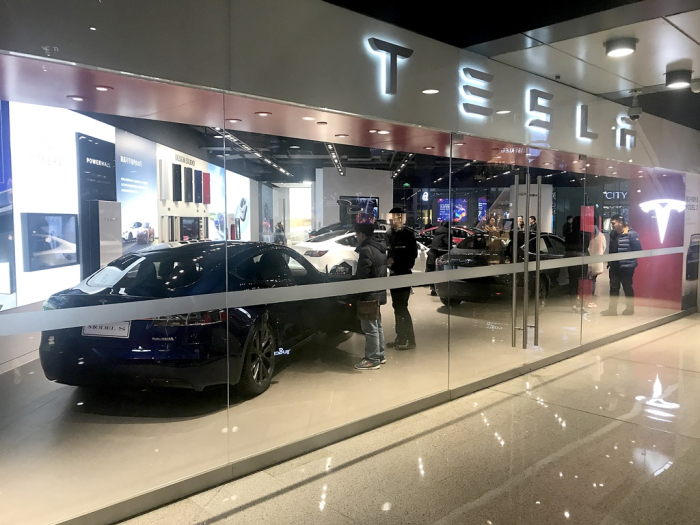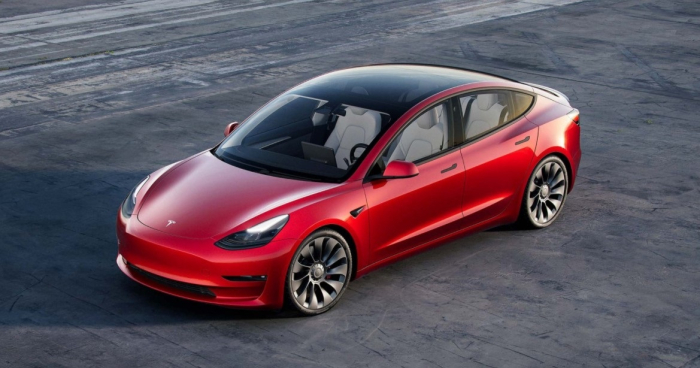Batteries
Korea battery makers suffer under growing China dominance
CATL, BYD sweep Tesla’s battery deals for 2022; Volkswagen, Daimler to use LFP cells
By Dec 24, 2021 (Gmt+09:00)
3
Min read
Most Read
LG Chem to sell water filter business to Glenwood PE for $692 million


Kyobo Life poised to buy Japan’s SBI Group-owned savings bank


KT&G eyes overseas M&A after rejecting activist fund's offer


StockX in merger talks with Naver’s online reseller Kream


Mirae Asset to be named Korea Post’s core real estate fund operator



South Korean battery manufacturers are suffering from the growing dominance of their Chinese competitors in the world’s electric vehicle market as the Chinese makers attract global automakers with more affordable products.
China’s battery makers are mainly producing lithium iron phosphate (LFP) batteries, which had been considered for domestic use as LFP cells are cheaper despite lower mileage. But LFP batteries are becoming a standard for entry-level EVs around the world.
On the other hand, nickel-cobalt-manganese (NCM) batteries, South Korean makers’ main products, are losing price competitiveness worldwide due to surging raw materials prices.
CHINA SWEEPS TESLA SUPPLY DEALS
China’s Contemporary Amperex Technology Co. Ltd. (CATL), the world’s top battery maker, and BYD won Tesla Inc.’s deals to supply all 55-gigawatt hour (GWh) batteries for 2022, enough for 1 million of the Model 3 and the Model Y, according to market tracker SNE Research on Dec. 23. Gotion High-Tech, the No. 4 battery maker on the mainland, said it signed a deal to deliver 200 GWh batteries from 2023 to 2028 with a US carmaker, which the industry speculated is also Tesla.
LFP cells’ energy density is lower than NFP batteries’, but they cost less, suitable for low-end EVs with shorter mileage.
In October, Tesla, the world’s top EV maker announced a plan to install LFP batteries to all of its standard-range EVs. Other global automakers followed suit with Volkswagen AG and Daimler AG to use LFP cells for their entry-level EVs from 2023 and 2024, respectively.

The trend is predicted to expand Chinese battery makers' global dominance. CATL accounted for 12.5% in the global markets except for China in the first 10 months of the year, double the 6.2% of a year earlier. Its LFP battery output next year was already expected to surge 6.7 times from 2021 on strong growth in the world’s low-cost EV market.
The US government was worried about its influence in the country’s auto industry.
“That dominance has stirred fears in Washington that Detroit could someday be rendered obsolete, and that Beijing could control American driving in the 21st century the way that oil-producing nations sometimes could in the 20th,” the New York Times reported on Dec. 22.
AGGRESSIVE EXPANSION WITH GOVERNMENT SUPPORT
Chinese battery makers are aggressively ramping up production capacities to further expand their dominance. CATL recently started the operation of a new factory with an annual capacity of 60 GWh in Fujian Province. Once its second phase expansion is completed, the plant is set to produce 120 GWh a year, similar to China’s total battery production capacity of 128.3 GWh.
BYD set up local corporations to build battery plants in six regions in 2021. Its capacity was estimated to have risen to 40% to 91 GWh this year from 65 GWh as of end-2020.
China’s authorities are fostering the domestic LFP battery industry, providing subsidies for technology development and raw material procurement. Beijing plans to spend more on companies that produce high-capacity LFP cells of 180-watt hour per kilogram.
SOUTH KOREAN MAKERS LOSE MARKET SHARES
The growing dominance by Chinese battery makers has hit South Korean producers, slashing their global market shares. LG Energy Solution Ltd.’s shares in the passenger car battery market fell to 23% in the first ten months from 25.8% a year earlier. Samsung SDI Co. accounted for 5% of the market during January-October, down from 6.7% in the same period of 2020, although SK On maintained its market share of 5.7%.
They lost price competitiveness as prices of key raw materials such as lithium, nickel and cobalt surged. LG Energy and Samsung SDI were known to raise prices of cylindrical batteries by 10% and 7%, respectively, from next month as nickel prices have quadrupled in the last year.
Industry watchers urged South Korean battery makers to produce LFP cells, which do not require high technology.
LG Energy and Samsung SDI have yet to consider LFP battery development as they focus on improving NCM batteries. SK On is mulling the low-cost cells.
“It is time to make a strategic decision on whether to go all-in for a single product or to make various products,” said an industry source.
Write to Hyung-Kyu Kim and Il-Gue Kim at khk@hankyung.com
Jongwoo Cheon edited this article.
More to Read
-
 EV BatteriesTesla’s shift to LFP cells to shake global battery industry
EV BatteriesTesla’s shift to LFP cells to shake global battery industryOct 22, 2021 (Gmt+09:00)
3 Min read -

Comment 0
LOG IN


